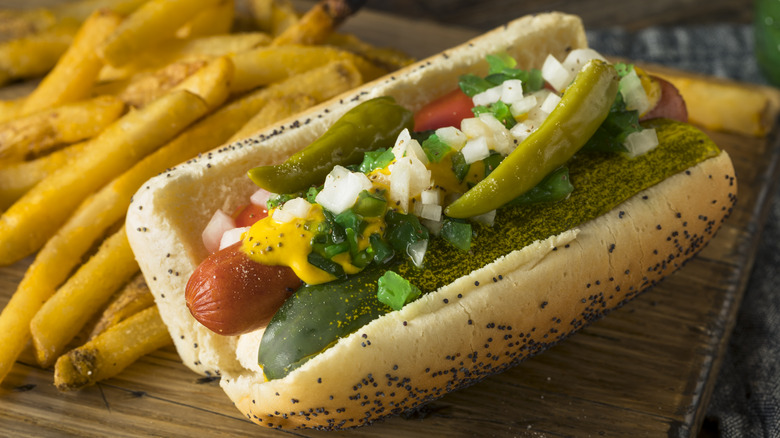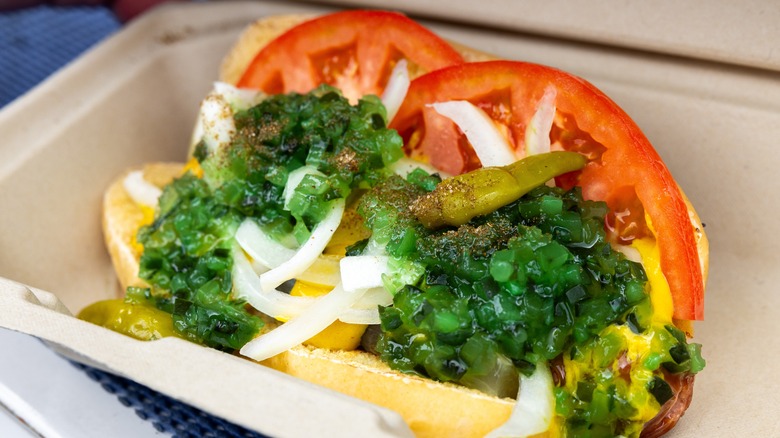The Ingredient That Makes Chicago Hot Dog Relish Neon Green
If you ever find yourself in the Windy City, you'll likely stumble upon a few iconic hot dog joints. The Chicago-style hot dog is truly a regional gem, known for being "dragged through the garden" — a phrase that describes the medley of veggies and condiments that adorn the all-beef frank nestled in a poppy-seed bun. The lineup of toppings includes diced white onions, tomato wedges, sport peppers, a dill pickle spear, yellow mustard (absolutely no ketchup), a dash of celery salt, and the brightest of the bunch — neon green sweet pickle relish.
The traditional recipe for the eye-catching relish, which was originally developed by Vienna Beef, features tangy, sweet, finely chopped pickled cucumbers. However, the cukes' natural green color doesn't measure up to the relish's definitive fluorescence. To achieve the characteristic vibrant shade, a small amount of blue food coloring is added to the mixture.
Although artificial food additives are a topic of concern among health-conscious consumers, the U.S. Food and Drug Administration has deemed several synthetic dyes safe for consumption. Of course, dressing your hot dog with the neon green relish isn't required, especially since the blue dye doesn't affect the flavor. It merely amplifies the visual appeal of the handheld meal. So, what exactly was the inspiration behind the radiant relish?
Neon green relish is more photo-friendly
As the story goes, the folks at Vienna Beef tinted a batch of lackluster-looking relish to improve its appearance in advertisements. "It was done for photography's sake. The relish was ugly, so they dyed it," Jim Locaciato, the Midwest sales director of Vienna Beef, explained to Forbes. The intense hue that was initially created for promotional purposes became a signature feature of the product and can still be spotted on Chicago dogs today. In fact, around 80% of the company's relish sales are attributed to the legendary neon green variety.
Research over the years has shown that color plays a psychological role in the eating experience. According to HunterLab, color helps us subconsciously determine the flavor, quality, and satiety of the foods we eat and beverages we drink. For instance, brightly colored foods are often perceived as more enjoyable and fresher, no matter their actual nutritional value. Therefore, in many Chi-Town cuisine connoisseurs' minds, bluish-green relish simply looks (and tastes) better than the run-of-the-mill stuff.
The neon green relish generously spooned onto countless Chicago-style hot dogs is a testament to innovation and culinary craftsmanship. The famous condiment offers a delicate balance of crunch and zest in each bite in addition to an unmistakable pop of color that sets the Chicago dog apart from other regional favorites.

